This is one in a series of posts on the Nikon Z7. You should be able to find all the posts about that camera in the Category List on the right sidebar, below the Articles widget. There’s a drop-down menu there that you can use to get to all the posts in this series; just look for “Nikon Z6/7”.
One of the things that has troubled DSLR users since phase-detection autofocus (PDAF) was invented is erroneous and inconsistent results. Mirrorless cameras (MILCs) have been better at that, because they have more bows in their quivers. They can focus on the sensor itself, bypassing the alignment and shimming that besets finder-PDAF in DLSRs. They can perform trimming operations using contrast-detect autofocus (CDAF). If your subject is holding still, it’s just a more accurate system. But, for the most part, it’s been a slower one, so accuracy can suffer in dynamic situations.
I’m not going to talk about speed today; just accuracy.
When I was testing the D850, I developed an autofocus accuracy test the involved making photographs of a checkerboard ramp and analyzing them with a computer program that I wrote in Matlab. Here’s what the setup looks like:
I mounted the 24-70 mm f/4 Nikkor S on the Z7 and set the focal length to 35 mm. I set up 1 meter from the target, and measured the focus shift of the lens as I stopped it down from f/4 to f/11 in 1/3 stop steps.
There are 10 measurements per tested aperture. They are plotted as dots. I measure the focus location in each of the Adobe RGB color planes, and which plane the measurement came from is indicated by the color of the dots. I’ve plotted the mean, mean-plus-standard-deviation, and mean-minus-standard-deviation values as lines. The amount of scattering in the dots and the distance between the mean-plus-standard-deviation and mean-minus-standard-deviation gives you an idea of the experimental error. The vertical axis is focus error at the image sensor in micrometers, with positive numbers indicating back-focus.
To get a better idea of how this will influence photography, consider the circles-of-confusion (CoCs) on the sensor implied by that much focus error:
The sensor pitch on the Z7 is about 4 and a half micrometers (um), so the worst error is well under the sensor pitch. This is very low focus shift. Note also the fact that all three color planes are brought into focus at essentially the same plane. That means the lens has very low longitudinal chromatic aberration (LoCA). For a relatively inexpensive zoom lens, this is spectacular performance. A word about the negative numbers on the CoC graph: of course, the circle of confusion can’t ever really be negative, but I am using negative numbers to represent front-focusing.
Now let’s look at how well the camera does with automatic focusing using AF-S and user-controlled spot selection.
Again, the CoC graph is more instructive.
The worst errors are on the order of the sensor pitch. This is excellent performance.
And the CoCs:
Again, the accuracy is excellent. And this is with no focus-trimming.
For comparison, here is the Fuji 63 mm f/2.8 on the GFX 50S:
The Sigma 50 mm f/1.4 ART after focus tuning:
The Zony 55 on the a7RIII:
And the 58 mm f/1.4 Nikkor on the D850:
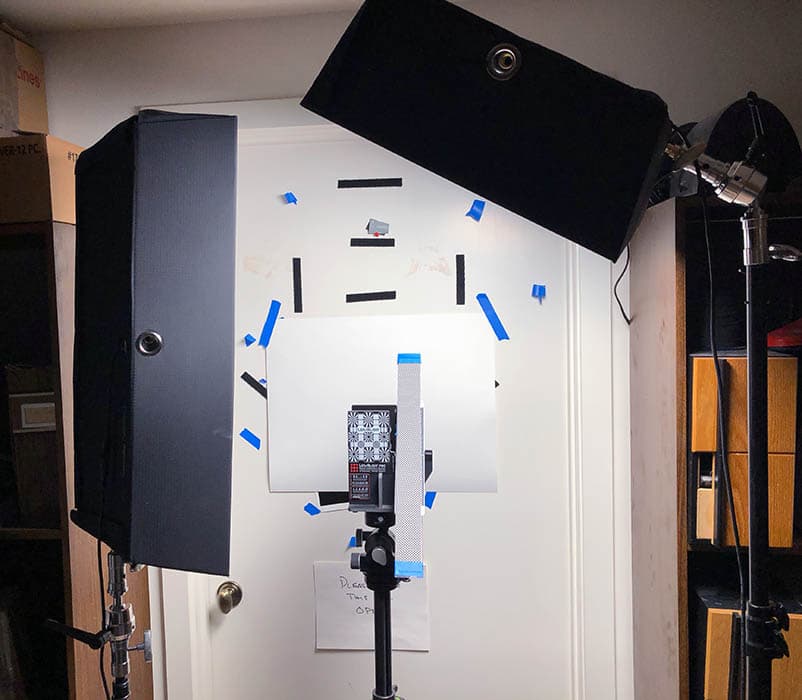

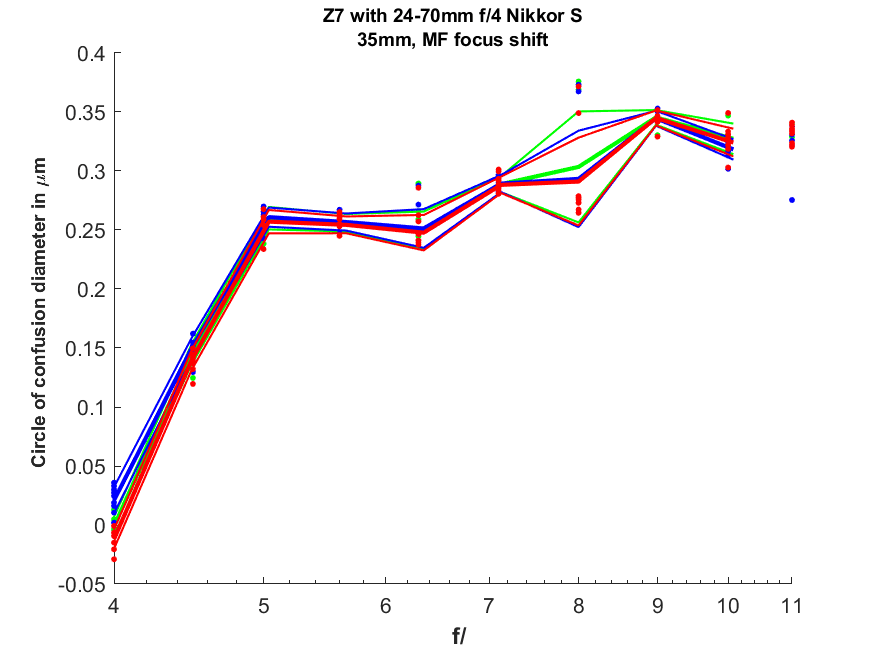
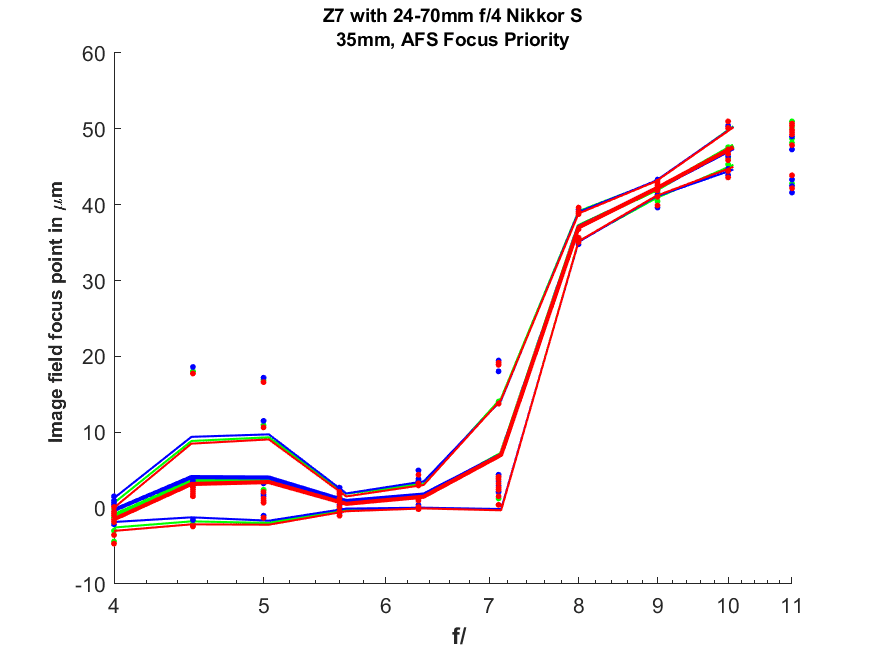
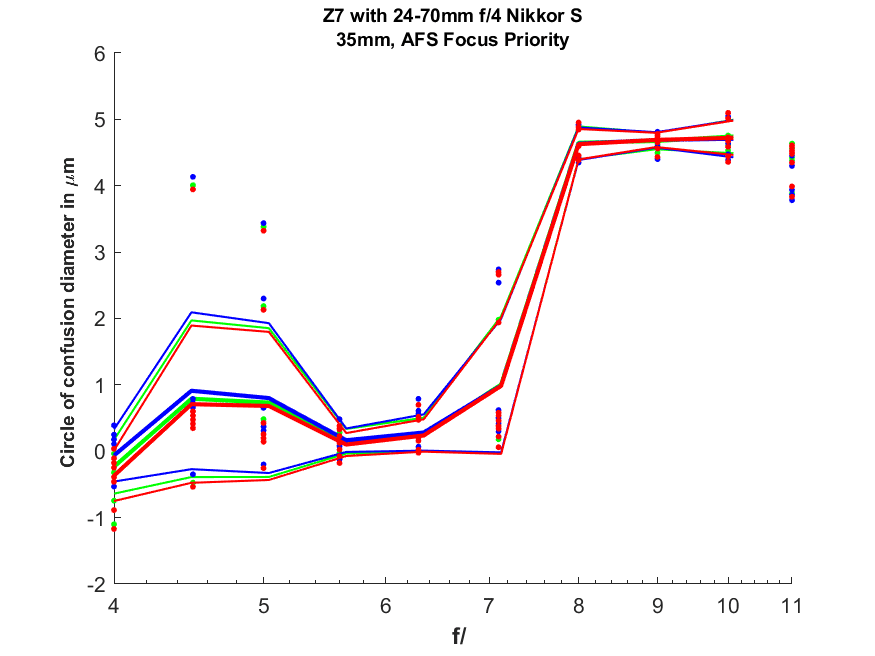
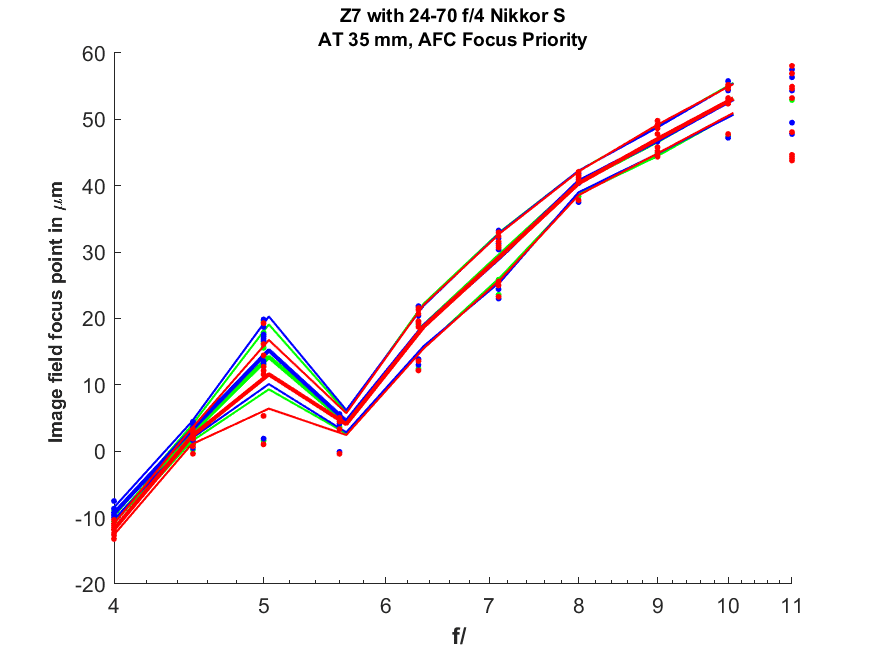
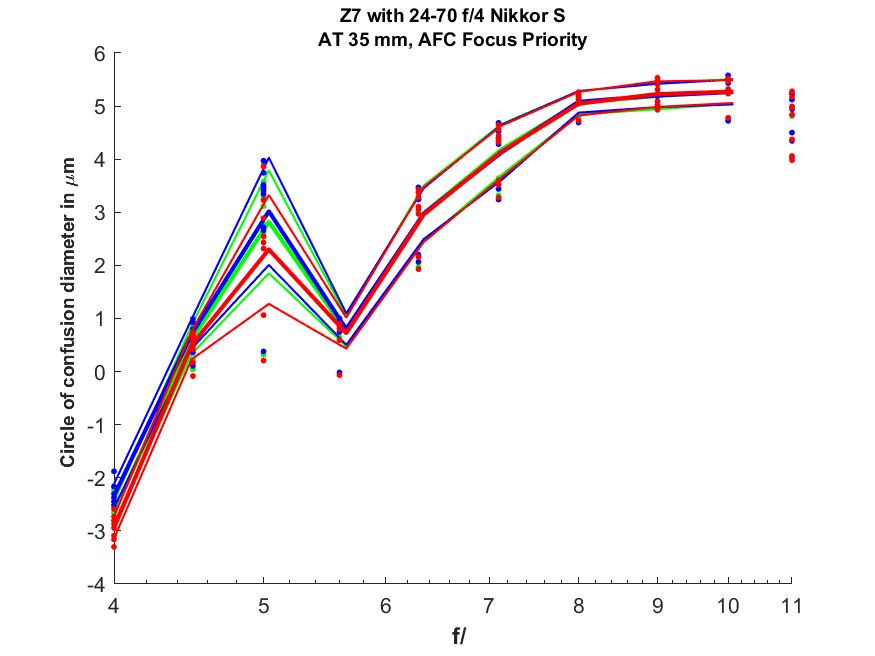
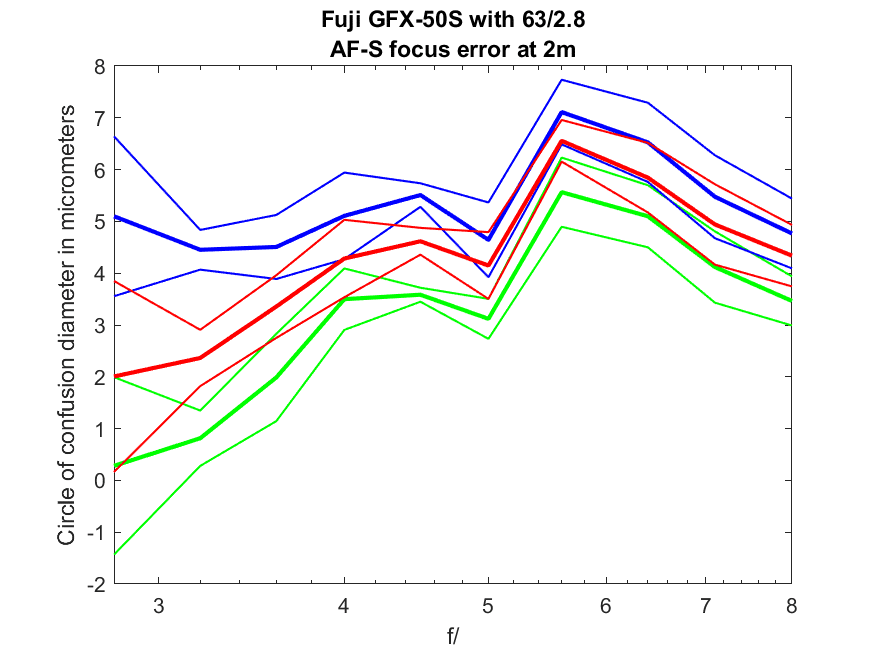
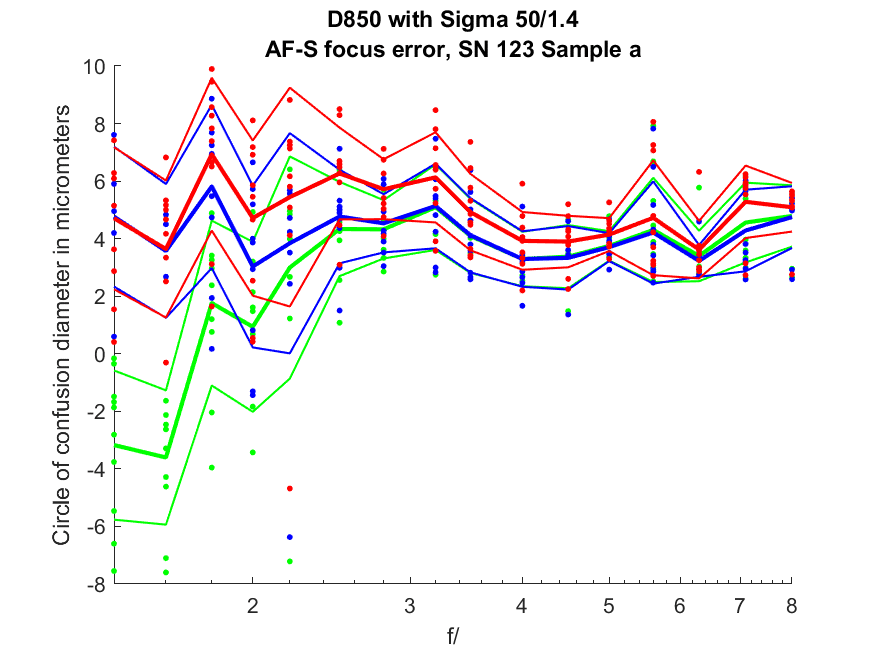

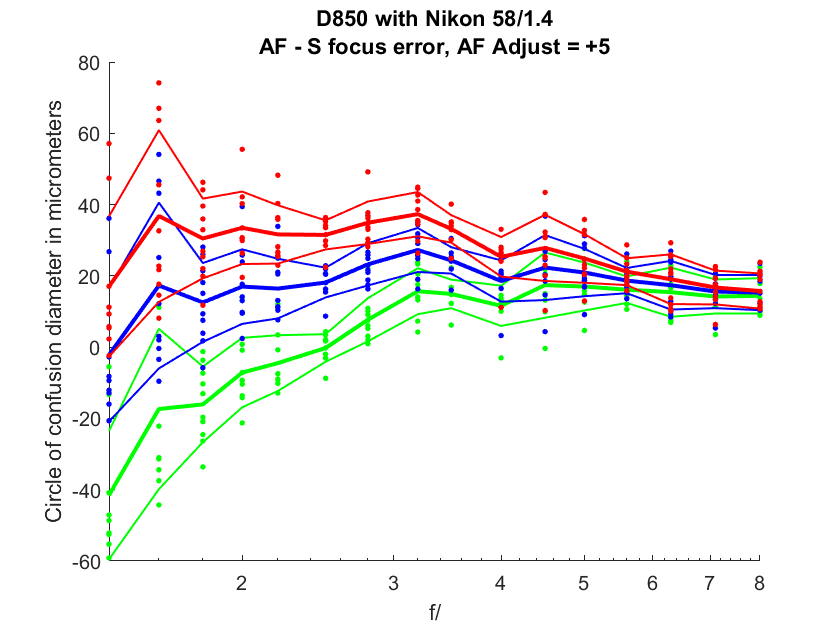
Jakob says
Hi, good content as always but you wrote 24 – 35 mm f/4 Nikkor S when you meant the 24 – 70 Lens at the beginning. You can delete this comment.
JimK says
I’m going to leave your comment in as a reminder to readers to correct me when they see things wrong. Thanks. Fixed.
SrMi says
This post is located in “Home / GFX 50 S /” instead of in “Home / Nikon Z6/7 /”.
JimK says
Thanks. Fixed.
Edward Wrobel says
Thank you Jim,
I just ordered Z7 with 24-70.